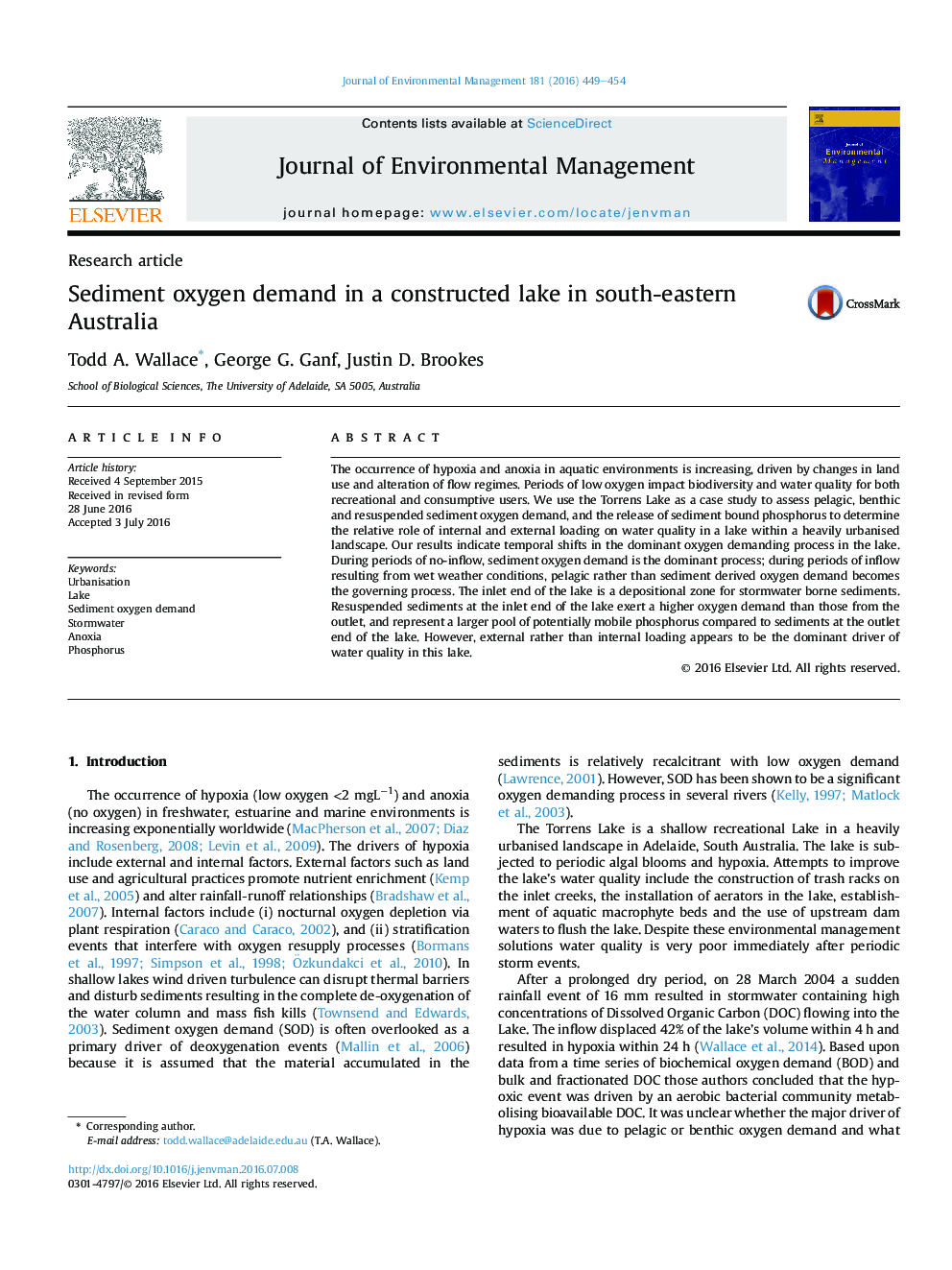| Article ID | Journal | Published Year | Pages | File Type |
|---|---|---|---|---|
| 7479722 | Journal of Environmental Management | 2016 | 6 Pages |
Abstract
The occurrence of hypoxia and anoxia in aquatic environments is increasing, driven by changes in land use and alteration of flow regimes. Periods of low oxygen impact biodiversity and water quality for both recreational and consumptive users. We use the Torrens Lake as a case study to assess pelagic, benthic and resuspended sediment oxygen demand, and the release of sediment bound phosphorus to determine the relative role of internal and external loading on water quality in a lake within a heavily urbanised landscape. Our results indicate temporal shifts in the dominant oxygen demanding process in the lake. During periods of no-inflow, sediment oxygen demand is the dominant process; during periods of inflow resulting from wet weather conditions, pelagic rather than sediment derived oxygen demand becomes the governing process. The inlet end of the lake is a depositional zone for stormwater borne sediments. Resuspended sediments at the inlet end of the lake exert a higher oxygen demand than those from the outlet, and represent a larger pool of potentially mobile phosphorus compared to sediments at the outlet end of the lake. However, external rather than internal loading appears to be the dominant driver of water quality in this lake.
Related Topics
Physical Sciences and Engineering
Energy
Renewable Energy, Sustainability and the Environment
Authors
Todd A. Wallace, George G. Ganf, Justin D. Brookes,
